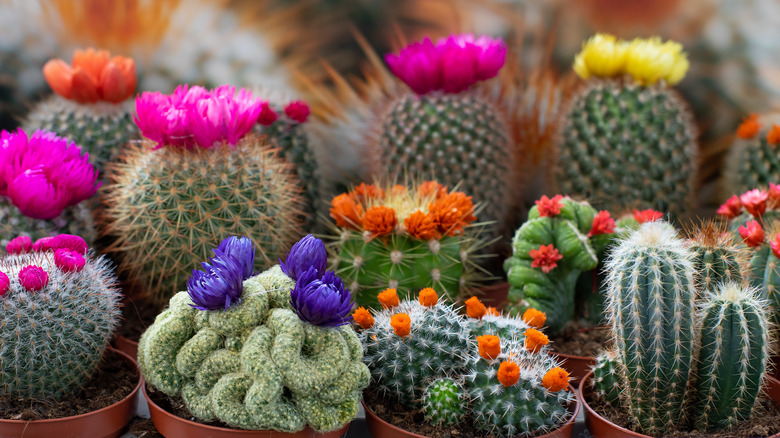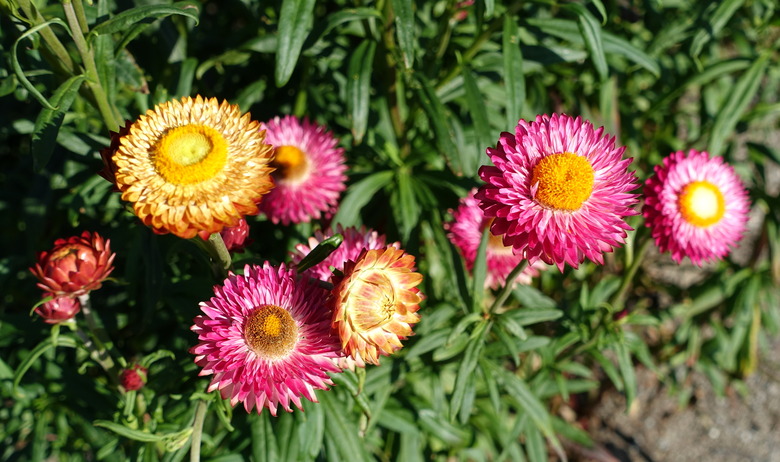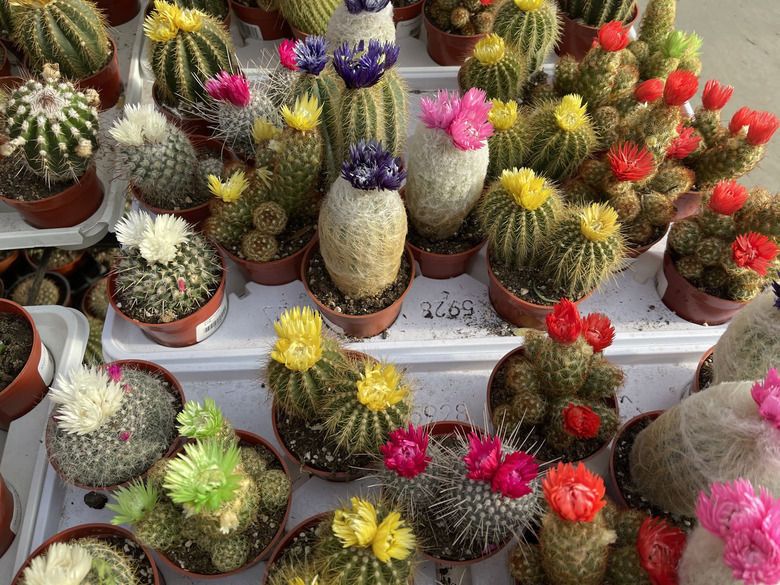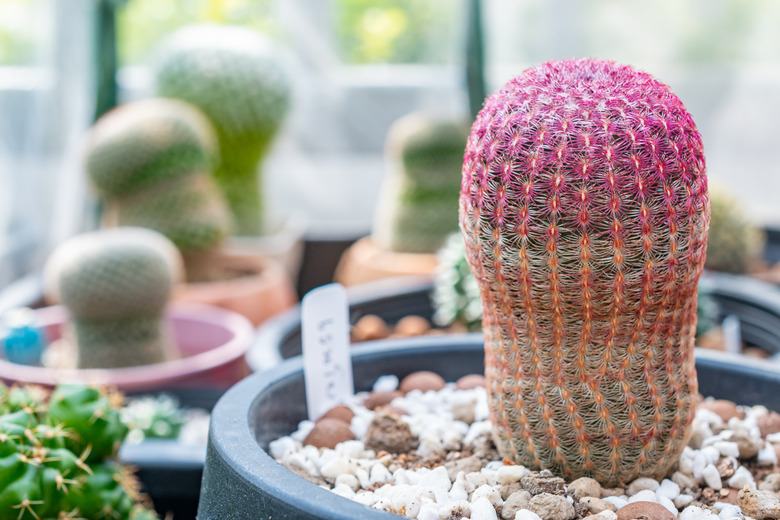How To Care For A Strawflower Cactus Plant
The term "strawflower cactus" doesn't refer to a type of cactus at all. Instead, it refers to a craft project in which the crafter combines a dried bract from a strawflower (Xerochrysum bracteatum; zones 8a through 10b) with a cactus variety, such as the pincushion cactus (Mammillaria grahamii; zones 8 to 11); hedgehog cactus (Echinopsis spp.; zones 5 to 11); or the golden barrel cactus (Echinocactus grusonii; zones 9 through 11). The papery flower is affixed to the top of the cactus using hot glue or pins, giving the impression that the cactus is constantly in bloom.
Caring for a strawflower cactus is all about caring for the cactus itself and not its strawflower accessory. Fortunately, the cactus varieties commonly used for strawflower cactuses grow best with a hands-off approach that make them a good choice for beginning cactus growers.
Tip
The bract of Xerochrysum bracteatum is sometimes called everlasting flower, or immortelle.
Growing Strawflower Cactuses
Providing the right growing conditions is key to keeping strawflower cactus plants alive and growing. Most cactuses from arid climates share similar growing conditions, which focus on bright light, warm temperatures and good drainage.
Sunlight Exposure
As with most succulents, cactuses need at least six hours of direct sunlight each day. Placing strawflower cactus houseplants near a sunny, south-facing window will provide plenty of light, although an unshaded west-facing window will also work well in a pinch.
Strawflower cactuses should not be left outdoors year round, because the dried flower bract will eventually get damaged by moisture and wind. However, if you must keep it outdoors, choose a sheltered location with plenty of direct sunlight and bring it indoors if stormy weather is forecast.
Temperature Range
Cactuses will tolerate cool temperatures during the winter months, but they perform much better when kept warm during the summer growing season. Temperatures between 65 and 85°F are best in summer, while temperatures between 45 and 55°F will suffice in winter.
If you keep your strawflower cactus outdoors and you live in a colder hardiness zone, move it indoors during the winter months. Place it in a cool, bright room during winter and then move it back outdoors in spring once temperatures warm above 55°F.
Soil and Drainage
Cactuses will eventually need to be repotted to refresh their soil or to provide a larger container. A ceramic pot with a drainage hole at the base is the best container for growing cactuses, because the ceramic will help regulate soil moisture levels, while the drainage hole at the base will allow excess water to escape.
Use cactus formula potting mix from a garden center or mix your own by combining equal parts potting soil and coarse sand. Be sure to repot the cactus at the same depth as it was growing in its original container.
Caring for Strawflower Cactuses
Cactuses are truly low maintenance, so learning how to care for one is easy to do. Most cactuses require little more than an occasional watering, but potted strawflower cactuses also benefit from a light feeding.
Water Lightly
Like all succulents, cactuses prefer their soil on the dry side, but they shouldn't be allowed to dry out completely. Test the soil moisture with your fingertip every few days. Water whenever the soil feels dry below the surface.
- Water the cactus until the water drains from the base of the pot. Dump out the water that collects in the saucer under the pot.
- Reduce watering during the winter months when temperatures are low. Provide just enough water to keep the cactus from shriveling.
Fertilize Sparingly
Although cactuses and other succulent plants like lean soil, potted cactuses benefit from an occasional light feeding. A monthly application of low-nitrogen fertilizer such as 5-10-5 or 7-9-5 is best. Using succulent-formula fertilizer is best, but standard garden fertilizer will also work if the application rate is adjusted.
Apply cactus-formula fertilizer according to the label directions. Apply the fertilizer at half the recommended rate if you are using a garden fertilizer intended for perennials.
Tip
Don't feed cactuses in winter when temperatures are cold and they aren't actively growing.
Creating a Strawflower Cactus
It's easy to make a strawflower cactus. Any species of cactus can be used, but round-topped varieties such as the pincushion or golden barrel cactus work best. Devil's tongue (Ferocactus latispinus; zones 9b through 11) and some species of prickly pear cactus (Opuntia spp.; zones 4 to 11) are also good choices.
Affix a dried everlasting flower or a fake flower to the top of the cactus using a dot of hot glue or a thin pin inserted through the flower and into the cactus. Flowers attached using a pin are easier to remove than those stuck on with hot glue, but the pins can also damage the cactus.
Your cactus strawflower may need to be replaced if it loses color or starts to break apart. Pry off the old flower using a sharp craft knife and glue or pin a new one on in its place.




